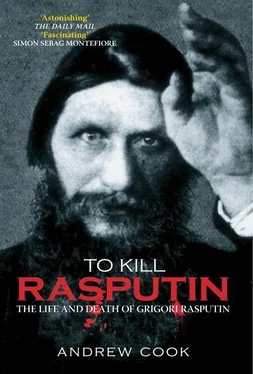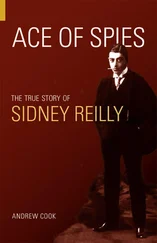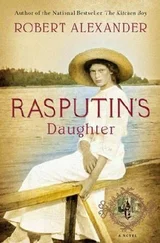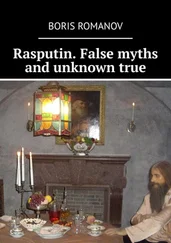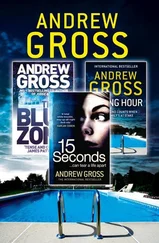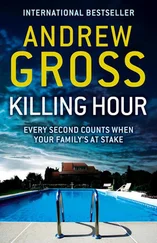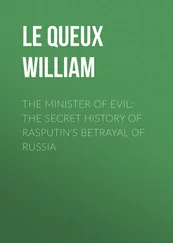According to Hoare, Protopopov insisted that the body must be returned to Rasputin’s family by eight o’clock the next morning and he didn’t care if it was impossible, it was necessary. The whole party then wanted to know how they were to examine a body out in the back of beyond when they didn’t have transport. A motor car would cost 200 roubles and it wasn’t in the budget. Protopopov told them the cost would be taken care of and one of the examining magistrates went off to find the pathologist Professor Kossorotov and take him out there in a car.
This account has the authentically chaotic ring of Protopopov, carrying out the unreasonable demands of an autocratic Tsarina, challenged by a group of underlings fortified by a lunchtime drink and community of feeling. However, Hoare had not seen the Autopsy Report, which shows the body was in fact examined a day later. The post mortem was not signed off by Professor Kossorotov until ten o’clock on the night of Tuesday 20 December/2 January. Kossorotov himself said, in an interview the following year, that he expected to perform the autopsy on Wednesday morning. But at seven o’clock on Tuesday evening, not long after his arrival at a professional dinner being held in his honour, he was called to the telephone and Protopopov told him to go and perform the autopsy now, or else. 11
Whenever the autopsy took place, according to Hoare:
Although the almshouse was lighted with electric light, there was no light at all when they arrived and no means of lighting it. The three gorodovois [watchmen] who were there said that no light was necessary as ‘dead men need no light’. The judge and the surgeon declared that they must have some light. Accordingly they sent out and obtained two small lamps to hang upon the wall, while one of the gorodovois held a lantern. After a while the gorodovoi declared that he felt ill and could not hold the lantern any more. The judge and the surgeon therefore were left alone in the partially lighted room. 12
The Autopsy Report appears competently done, given such circumstances. Professor Kossorotov wrote:
The body is that of a man of 50 years of age, of above average height, dressed in a blue embroidered smock over a white shirt. His legs, in high goatskin boots, were bound with a cord, and the same cord was used to bind his wrists. His light chestnut coloured hair, moustache and beard were long, dishevelled, and soaked in blood. His mouth was half-open, teeth clenched. The upper part of his face was covered in blood. His shirt was also blood-stained.
Three bullet wounds can be identified.
The first penetrated the left-hand side of his chest and passed through his stomach and liver.
The second entered the right-hand part of his back and passed through his kidneys.
The third hit the victim on the forehead and penetrated the brain.
Ballistic analysis
The first two bullets hit the victim when he was standing
The third bullet hit the victim when he was lying on the ground.
The bullets came from revolvers of various calibres.
Examination of the brain
The cerebral matter exudes a strong smell of alcohol.
Examination of stomach
The stomach contains an amount corresponding to approximately 20 soup-spoonsful of a brownish, alcohol-smelling liquid. Examination reveals no trace of poison.
Examination of the lungs
The lungs contain water (which prompts the assumption that the victim was still breathing when he was thrown into the river).
Wounds
The left-hand side has a gaping wound inflicted by some sharp object or possibly a spur.
The right eye has come out of its orbital cavity and fallen on to the face. At the corner of the right eye the skin is torn.
The right ear is torn and partially detached.
The neck has a wound caused by a blunt object.
The victim’s face and body bear the signs of blows inflicted by some flexible but hard object.
The genitals have been crushed due to the effect of a similar object.
Cause of death
The victim must rapidly have been weakened by haemorrhagia arising from a wound to the liver and a wound to the right-hand kidney. Death would then have been inevitable within 10 to 20 minutes. At the moment of death the deceased was in a drunken state. The first bullet passed through the stomach and liver. This mortal wound was inflicted by a shot from a range of 20cm. The wound to the right-hand side, inflicted almost simultaneously with the first, would also have been lethal; it passed through the right-hand kidney. At the time of the attack the victim was standing and not wearing a cloak. The body was already on the ground when the frontal wound was inflicted.
Objects found on the body
A heavy gold chain.
A small gold cross on which are engraved the following words: Save and Protect. A gold and platinum bracelet with a clasp bearing the letter N and the Imperial Russian crown with the two-headed eagle.
These two objects [presumably the bracelet and the cross] and the blue silk flowers [flowered smock] and white shirt worn by the deceased were reclaimed by the Imperial Palace on 28th December. After medical/legal examination and autopsy, the body of Grigori Efimovich Rasputin was transported to the chapel of Tchesma Hospital. 13
In one account, the Tsarina and Vyrubova arrived in a carriage early on Wednesday morning, disguised as nurses, to claim the body. In another they turned up at the almshouse in the middle of the autopsy and demanded to see it. On being told that this was impossible, they asked for the clothes. It is said that ‘a couple of days later’ a surgeon performing a routine operation on the Tsarevich’s knee (at Tsarskoye Selo) saw Rasputin’s blue silk shirt embroidered with yellow flowers under the operating table. 14Yet according to the paragraph at the end of the post mortem, it would be a week before the shirt – a gift from the Empress – was taken to Tsarskoye Selo.
As Kossorotov began his grisly work that Tuesday, Wickham Steed, the Foreign Editor of the Times, was scratching his head over a wire dated Petrograd, 1 January. It was both alarming and puzzling. It began:
The body of Rasputin was recovered this morning by divers from the bottom of an ice-hole in the Neva near Petrovski Bridge, which crosses one of the lesser arms of the river north of the city.
According to this morning’s newspapers, the tragedy to which this discovery points appears to have been enacted on Saturday morning at the Yusupov Palace on the Moika canal. But none of the names of participants is mentioned.
Meaning murder. Prince Yusupov had been a well-known figure in London society before he married. There were cuttings… This was obviously big news, too big to spike, but it was just as obviously chapter two of a story. Where on earth was chapter one? Something was missing. By the time Steed had rummaged for anything from Petrograd correspondent Wilton that might have come in earlier and slipped behind the desk, it was the middle of the night in Russia. In London, the Times must also be put to bed, so late on Tuesday under the headlines RASPUTIN DEAD – BODY RECOVERED IN THE NEVA – SUSPICION OF MURDER, Steed composed the following lead-in, to appear in italics:
Telegrams received from Petrograd allege that the notorious monk Rasputin, whose body has just been recovered from the Neva, was murdered. The messages so far to hand from our Petrograd Correspondent make no direct reference to this and other material points. His narrative must therefore be regarded as still incomplete. 15
Wilton’s story appeared below this paragraph on Wednesday. His wire of Saturday had never arrived. He received a baffled enquiry from London that Tuesday, wrote a full report of the Rasputin affair and sent it back with the only explanation for the lost message that he could think of.
Читать дальше
